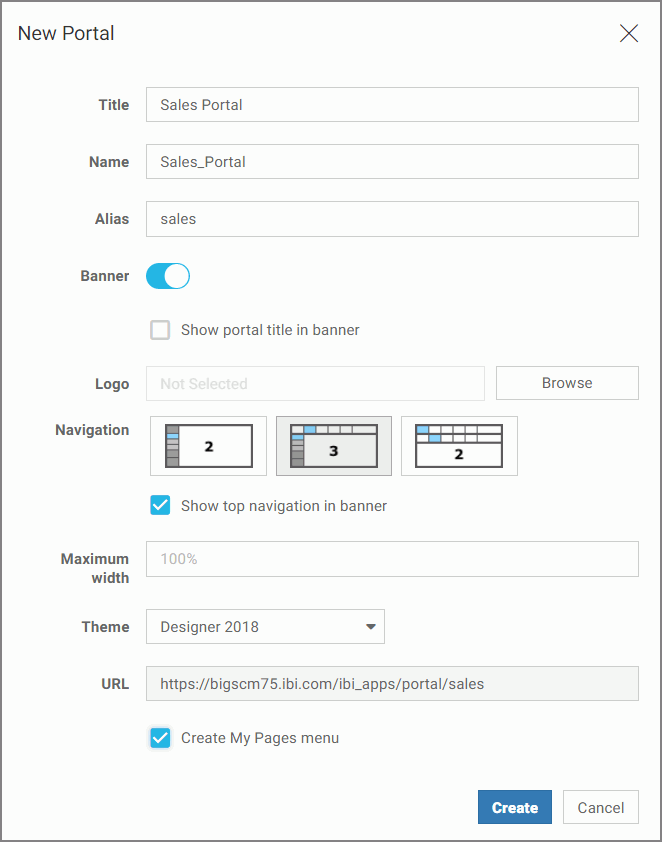Creating Portals
The new generation Business Intelligence (BI) Portal is an analytical content management system that provides a flexible and interactive environment for both authors and consumers of data analytics. It allows users to access and share content, customize their portal experience, collaborate, and build sophisticated structures for data storytelling.
The key benefits of the BI portal are:
- Multi-level page navigation, which is especially useful in organizing large numbers of pages.
- Flexible page layout options for dashboards and InfoApps.
- Mobile-friendly design that ensures responsive behavior on any device and with any type of content.
- Built-in page filter that is automatically enabled whenever users display parameterized content on a personal page.
- Modern styling featuring clean and streamlined UI and interchangeable themes.
You can create a portal structure in your repository, which you can populate by adding pages and workbooks. You can also configure the option for users to create personal pages.
Procedure: How to Create a Portal
- From the WebFOCUS Home Page, in the Resources tree, select the domain or folder where you want to create the portal, click the Designer tab in the Content Explorer, and then click Portal.
The New Portal dialog box opens.
- Populate the fields.
The following fields are available:
- Title. The title of the portal.
- Name. The name of the portal. This field is populated automatically to match the Title field. You can edit it.
- Alias. Creates an alias for your portal.
- Banner. Activates the banner for your portal. This option is enabled by default.
Note: It is recommended to disable the banner if you plan to embed your portal into a third-party application.
- Show portal title in banner. When selected, displays the title of the portal in the banner.
- Logo. Allows you to customize a logo to customize your portal.
- Navigation. Provides layout selection for your portal. The options are two-level side, three-level, and two-level top.
- Show top navigation in banner. If selected, displays the folder structure as banner links rather than tabs. This option is only available for three-level and two-level top layouts.
- Maximum width. Controls the maximum width of the portal, which includes the banner, all pages, and side navigation. If specified, overrides the Maximum width property set for pages in the portal.
Note: The placeholder text changes to a pixel value when you enter a number.
- Theme. Allows you to choose themes that can be customized.
- URL. A read-only field that displays the URL for the portal.
Note: When you type an Alias value, the URL field automatically changes to reflect the new location.
- Create My Pages menu. If selected, enables users to create personal pages at run time.
Note: This option is not available in the Edit Portal dialog box.
An example of the New Portal dialog box that has been populated with information is shown in the following image.

- Click Create.
The new portal structure is created in the specified domain or folder. It is now ready to be populated with folders, workbooks, pages, and shortcuts that serve as links to other workbooks and pages.
- To edit your portal, right-click it in the Resources tree or inside the WebFOCUS Explorer, and then click Edit.
The Edit Portal dialog box opens, where you can change your selections.
- Release: 8206
- Category: Building Portals
- Product: Business Intelligence Portal
- Tags: How-to's, Release Features
